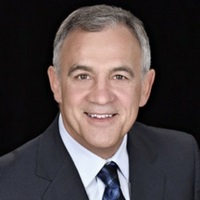As one of the three museums under the new Ingenium banner, the Canada Aviation and Space Museum – in collaboration with the Canadian Conservation Institute – will provide historical information to support the conservation, treatment, and collection of any recovered models or materials.

The Avro Arrow was the first and last supersonic interceptor designed and built in Canada. Developed between 1953 and 1959, it was produced to counter jet-powered Soviet bombers that had the potential to attack North America over the Arctic.
The nine Avro Arrow free-flight models that OEX hopes to locate and recover were test models used to evaluate aerodynamic qualities and stability of the storied aircraft’s design. They were flown over Lake Ontario between 1954 and 1957.
Through a national partnership involving the Canada Aviation and Space Museum, OEX, the Royal Canadian Air Force and the Canadian Conservation Institute, the Museum will keep the public apprised of any milestones in the search-and-recovery mission. It will also provide periodic updates on plans for conservation, preparation and public exhibition of the artifacts.
OEX holds survey and recovery permits from the Ontario Ministry of Tourism, Culture and Sport. It is financially supported by a group of Canadian mining companies and financial institutions, and is funding survey and recovery work, as well as committing to conservation work and display costs.
Follow this exciting story as it unfolds, using the hashtag #raisethearrow or via IngeniumCanada.org.
Quotations
 “Our museum is thrilled to be partnering on this historically significant search-and-recovery project. The Canada Aviation and Space Museum’s collection comprises the largest surviving pieces of the Avro Arrow: a nose section and two wingtips. A free-flight model would be a wonderful addition to our collection, and to the Arrow story we share with Canadians.”
“Our museum is thrilled to be partnering on this historically significant search-and-recovery project. The Canada Aviation and Space Museum’s collection comprises the largest surviving pieces of the Avro Arrow: a nose section and two wingtips. A free-flight model would be a wonderful addition to our collection, and to the Arrow story we share with Canadians.”
– Fern Proulx, interim President and CEO of Ingenium
 “As professional explorers in the mining business, we initiated this program about a year ago with the idea of bringing back a piece of lost Canadian history to the Canadian public. As individuals, as a company, as a group and with our partners and our project participants in this search effort, we all have the same goal in mind: to find and return these beautiful pieces of Canadian technology to the public eye during this anniversary year of our incredible country. Like Avro, our own corporate group was built on dreams, and this project is a proud reminder of what we as Canadians have done, what we do, and what we can do.”
“As professional explorers in the mining business, we initiated this program about a year ago with the idea of bringing back a piece of lost Canadian history to the Canadian public. As individuals, as a company, as a group and with our partners and our project participants in this search effort, we all have the same goal in mind: to find and return these beautiful pieces of Canadian technology to the public eye during this anniversary year of our incredible country. Like Avro, our own corporate group was built on dreams, and this project is a proud reminder of what we as Canadians have done, what we do, and what we can do.”
– John Burzynski, President and CEO of Osisko Mining Inc. and head of OEX Recovery Group Incorporated
For the Silo, Zoë Lomer.
About the Canada Aviation and Space Museum
Located on a former military air base just 5 kilometres from the Prime Minister’s residence at 24 Sussex Drive in Ottawa, the Museum focuses on aviation in Canada within an international context, from its beginnings in 1909 to the present day. As Canada’s contribution to aviation expanded to include aerospace technology, the Museum’s collection and mandate grew to include space flight. The Collection itself consists of more than 130 aircraft and artifacts (propellers, engines) from both civil and military service. It gives particular, but not exclusive, reference to Canadian achievements. The most extensive aviation collection in Canada, it is also considered one of the finest aviation museums in the world.
Museum Highlights: Largest surviving pieces of the famous Avro Arrow (its nose section and two wing tips); the original Canadarm used on the Endeavour space shuttle; Lancaster WWII bomber; Life in Orbit: The International Space Station exhibition.
About Ingenium – Canada’s Museums of Science and Innovation
Launched in June 2017, Ingenium is a new national brand established to preserve and share Canada’s story of scientific and technological heritage. This corporate brand, which celebrates ingenuity, encompasses three national institutions – the Canada Agriculture and Food Museum, the Canada Aviation and Space Museum, and the Canada Science and Technology Museum. Under the Ingenium brand, these three museums are places where the past meets the future, with spaces where visitors can learn and explore, play and discover. Ingenium also has an eye to the future with a state-of-the-art Collections Conservation Centre, set to open in 2018, digital and social media platforms, and travelling national and international exhibitions to educate, entertain and engage audiences across Canada and around the world. For more, visit us: IngeniumCanada.org.
OTTAWA, le 14 juillet 2017 – Le Musée de l’aviation et de l’espace du Canada est fier de soutenir le OEX Recovery Group Incorporated (« OEX ») pour un projet de recherche et de récupération de neuf appareils Arrow de Avro à vol libre dans le lac Ontario. OEX a mis sur pied ce projet dans le cadre d’une initiative Canada 150.
Le Musée de l’aviation et de l’espace du Canada, l’un des trois musées de la bannière Ingenium, en collaboration avec l’Institut canadien de conservation, fournira des renseignements historiques pour soutenir la conservation, le traitement et la collecte de tout appareil ou matériel récupéré.
L’appareil Arrow de Avro a été le premier et le dernier intercepteur supersonique de conception et de fabrication canadienne. Créé entre 1953 et 1959, il a été produit pour résister aux bombardiers à turboréacteurs soviétiques qui avaient la capacité d’attaquer l’Amérique du Nord en passant par l’Arctique.
Les neuf appareils Arrow de Avro à vol libre que OEX espère repérer et récupérer étaient des maquettes utilisées pour évaluer les caractéristiques aérodynamiques et la stabilité de la conception légendaire de l’aéronef. Ils ont survolé le lac Ontario entre 1954 et 1957.
Dans le cadre d’un partenariat national entre le Musée de l’aviation et de l’espace du Canada, OEX, l’Aviation royale canadienne et l’Institut canadien de conservation, le Musée tiendra le public informé sur les étapes de la mission de recherche et de récupération. Il fournira également des mises à jour périodiques sur les plans de conservation, de préparation et d’expositions publiques des artefacts.
OEX détient des permis de reconnaissance et de récupération du ministère du Tourisme, de la Culture et du Sport de l’Ontario, et est soutenu financièrement par un groupe de sociétés minières et d’institutions financières. L’organisme finance le travail de reconnaissance et de récupération, et s’engage à soutenir les coûts de conservation et d’exposition.
Suivez le déroulement de cette passionnante histoire à l’aide du mot-clic #rechercherArrow ou en cliquant sur IngeniumCanada.org.
Citations
« Notre Musée est ravi de son partenariat pour ce projet de recherche et de récupération d’importance historique. La collection du Musée de l’aviation et de l’espace du Canada compte les plus grandes pièces restantes de l’Arrow d’Avro : une partie avant et deux extrémités d’ailes. Un appareil à vol libre serait un merveilleux ajout à notre collection ainsi qu’à l’histoire du Arrow que nous partageons avec les Canadiens. »
– Fern Proulx, président-directeur général par intérim d’Ingenium
« En tant qu’explorateurs professionnels du secteur minier, nous avons lancé ce programme il y a environ un an dans le but de présenter un morceau perdu de l’histoire canadienne aux citoyens. En tant qu’individus, qu’entreprise, que groupe et avec nos partenaires et les personnes participant à ce projet de recherche, nous avons un seul objectif : retrouver et retourner ces magnifiques pièces de technologie canadienne au public pendant l’année anniversaire de notre superbe pays. Tout comme Avro, notre propre groupe de sociétés s’est bâti sur des rêves, et ce projet rappelle fièrement ce que nous avons fait, ce que nous faisons et ce que nous pouvons faire en tant que Canadiens. »
– John Burzynski, président-directeur général de la minière Osisko et chef du OEX Recovery Group Incorporated
Le Musée de l’aviation et de l’espace du Canada
Le Musée : Situé sur une ancienne base militaire à seulement cinq kilomètres du 24, prom. Sussex à Ottawa, résidence du premier ministre, le Musée concentre ses activités sur l’aviation au Canada dans un contexte international, des débuts de l’aviation au Canada en 1909 jusqu’à nos jours. Comme la contribution à l’aviation du Canada a évolué pour inclure les technologies aérospatiales, la collection et le mandat du Musée se sont aussi élargis pour inclure les vols spatiaux. La collection comprend plus de 130 aéronefs et artéfacts (hélices, moteurs) militaires et civils. L’accent est mis, mais n’est pas exclusif, sur les réalisations canadiennes. Il s’agit de la collection d’aéronefs la plus importante au Canada, et l’un des plus beaux musées mondiaux de l’aviation.
Pièces de résistance: Le plus gros élément du fameux Avro Arrow encore disponible (le nez de l’appareil); le Canadarm d’origine de la navette spatiale Endeavour; le bombardier Lancaster WWII; l’exposition Vivre en orbite : la station spatiale internationale.
À propos d’Ingenium : Musées des sciences et de l’innovation du Canada
Dévoilée en juin 2017, Ingenium est une nouvelle identité qui a été adoptée pour préserver et raconter l’histoire du patrimoine scientifique et technologique du Canada. S’inspirant de la racine latine du mot « ingéniosité », cette identité corporative englobe trois institutions nationales, soit le Musée de l’agriculture et de l’alimentation du Canada, le Musée de l’aviation et de l’espace du Canada et le Musée des sciences et de la technologie du Canada. Sous l’identité Ingenium, ces trois musées deviennent des lieux où le passé rejoint le futur, et où les visiteurs peuvent apprendre et explorer, s’amuser et faire des découvertes. Ingenium se tourne aussi vers l’avenir grâce à son Centre de conservation des collections à la fine pointe de la technologie, dont l’ouverture est prévue en 2018, à ses plateformes numériques et sociales, ainsi qu’à ses expositions itinérantes d’envergure nationale et internationale qui sauront éduquer, divertir et captiver des publics de tous âges partout au Canada et dans le monde entier. Pour en savoir davantage, visitez-nous à IngeniumCanada.org/fr.


